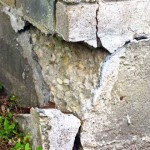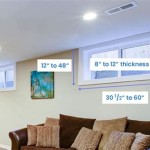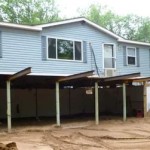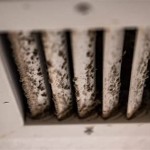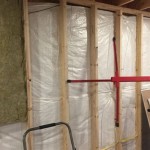Sump Pump Hole In Basement: A Comprehensive Guide
A sump pump hole in the basement is an essential component for protecting your home from flooding. It is a pit dug into the basement floor that collects water and pumps it away from the foundation. Sump pumps are typically installed in areas where the water table is high or where there is a risk of flooding due to heavy rains or snowmelt. If you live in an area that is prone to flooding, it is important to have a sump pump installed in your basement.
There are a few different types of sump pumps available, so it is important to choose one that is right for your needs. The most common type of sump pump is a submersible pump, which is placed inside the sump hole. Submersible pumps are relatively inexpensive and easy to install. However, they can be noisy and may require frequent maintenance.
Another type of sump pump is a pedestal pump, which is placed outside the sump hole. Pedestal pumps are more expensive than submersible pumps, but they are also quieter and require less maintenance. However, they are not as powerful as submersible pumps, so they may not be suitable for areas where there is a high risk of flooding.
When choosing a sump pump, it is important to consider the following factors:
- The size of your basement
- The depth of the water table
- The amount of rainfall or snowmelt that your area receives
- The presence of any other water sources, such as a basement bathroom or laundry room
Once you have chosen a sump pump, it is important to install it correctly. The sump hole should be dug to a depth of at least 18 inches and the pump should be placed in the center of the hole. The pump should be connected to a discharge pipe that leads away from the house. The discharge pipe should be at least 2 inches in diameter and should be sloped downward away from the house.
It is also important to maintain your sump pump regularly. This includes checking the pump for clogs and debris, and testing the pump to make sure that it is working properly. Sump pumps should be tested at least once a year, and more often if you live in an area that is prone to flooding.
By following these tips, you can help to protect your home from flooding and ensure that your sump pump is working properly.

Sump Pits Introductory Guide Water Commander

The Difference Between Sump Pits And Lift Stations Cape Coral Fort Myers Plumbing Air Conditioning Service Avis

Should My Sump Pump Pit Always Have Water Inside It

What Are Basement Weep Holes My Foundation Repair

Top Three Sump Pump Mistakes To Avoid Waterwork Plumbing

Should A Sump Basin Be Perforated Rapid Foundation Repair

Sump Pump Installation How To Install A Homeserve Usa

Diy Sump Pump Install Your Own Smd Fluid Controls

Basement Sump Pump Sedona Waterproofing Solutions

Sump Pump Installation In Montana Installing A System Billings Livingston Miles City Mt
Related Posts
